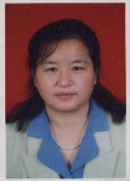In ancient China, the way to use drugs was compared to the way to command an army. The reason is that to command an army to fight needs military strategy and to use drugs to treat diseases follows certain principles.
The combined use of drugs based on experience or theory is c~lled prescription. There are different forms of prescription, such as pills, powder, paste and bolus etc.The knowledge about how to use certain medicinal herbs together, what principles to follow, what dosage should be decided and how to modify in clinical application is the theoretical foundation of prescription studies. In Huang Di Nei Jing (Yellow Emperor's Canon of Medicine), there are over ten simple prescriptions which are now studied as three theories of prescriptions, namely monarch, minister, assistant and guide", "sevenprescriptions" and "compatibility between qi and odors". "Monarch, minister, assistant and guide" are used to describe the composition of prescriptions. "Monarch drug" is the key ingredient in the prescription, "minister drug" promotes the "monarch drug" to exert curative effect,"assistant drug" strengthens the effect of the prescription or restrict toxin, and "guide drug" directs other ingredients to work on the affected part.Prescriptions can be classified into different categories, small prescription is characterized by fewer ingredients and small dosage, large prescription is characterized by more ingredients and large dosage. Odd prescription means that the ingredients contained in the prescription are odd in number and even prescription means that the ingredients contained in the prescription are even in number. Other categories of prescriptions include drastic prescription, mild prescription and compound prescription.
To some people, these theories may not be developed from empirical practice. For example, Huang Di Nei Jing (Yellow Emperor's Canon of Medicine) says, "purgation does not use even prescriptions." But in Shang Han Za Bing Lun (Treatise on Cold Diseases and Miscellaneous Diseases), da cheng qi tang (major qi-supporting decoction), a drastic prescription, is just composed of herbs odd in number. And it even says, "if the odd prescription does not help, even prescription can be used."If this is the case, it seems that difference between odd prescription and even prescription is meaningless. But we must know that the theory of TCM is quite flexible, not rigid.
The idea of "monarch, minister, assistant and guide" is thought by many modern scholars as the principles for composing prescriptions in Shang Han Za Bing Lun (Treatise on Cold Diseases and Miscellaneous Diseases). To analyze any prescriptions, no matter how many ingredients they contain, the principles of "monarch, minister, assistant and guide" have to be used and are always practical.
Those who objectively study the history of prescriptions also pay attention to the idea of "monarch, minister, assistant and guide" mentioned in Huang Di Nei Jing (Yellow Emperor's Canon of Medicine), but they believe that the theory of prescriptions was developed and put into practice just from the Song Dynasty. Objectively speaking the idea of "monarch, minister, assistant and guide'.in analyzing prescription is quite significant, making it clear for people to understand the order and compatibility of the ingredients contained in a prescription.
The idea of "harmony of the seven interactions among herbs" mentioned in Shen Nong Ben Cao Jing (Agriculture God's Canon of Materia Medica), the earliest book on Chinese materia medica, is also an important theory for prescriptions, namely mutual promotion, mutual assistance, mutual restriction, mutual inhibition, mutual antagonism and mutual detoxification. This shows that the composition of a prescription is not simply a combination of several ingredients. In fact it is developed according to the principles mentioned above. In history there were monographs studying the compatibility of herbs. In modern times, some important projects have been undertaken to study the rules of herbal compatibility according to modem pharmacology. For instance, shao yao gan cao tang (Flos Moutan and Radix Glycyrrhizae decoction), a prescription mentioned in Shang Han Lun (Treatise on Cold Diseases), was already scientifically studied. The following is the conclusion:
Paeoniflorin contained in Chinese herbaceous peony is effective for relieving spasm by directly exerting effect on the smooth muscles. It also can be used to tranquilize the mind, relieve pain and stop convulsion. It has been proved that it inhibits different parts of the central nerve system with different effects. Radix Glycyrrhizae mainly contains glycyrrhizin, liquiritin and various flavones, effective for relieving convulsion and pain, resisting ulceration, stopping cough and removing toxin.
Modern studies on the effective elements and pharmacological effects on this prescription have only proved its action in treating various pain and its combined effect. But how people in ancient times knew that these two herbs could be used together to exert such an effect still remains unknown.
After the Song Dynasty, there appeared some new development in classification of prescriptions. Prescriptions were classified according to their actions into eight categories, namely sweating, vomiting, purgation, regulation, warming, clearing, nourishing and resolving. These eight categories of prescriptions also reflect the eight major therapeutic methods. Clinically these eight methods are used singularly or multiply according to pathological conditions of the patients. For example, the warming and clearing methods can be used together and the nourishing
and resolving methods may be used simultaneously for certain purposes.

